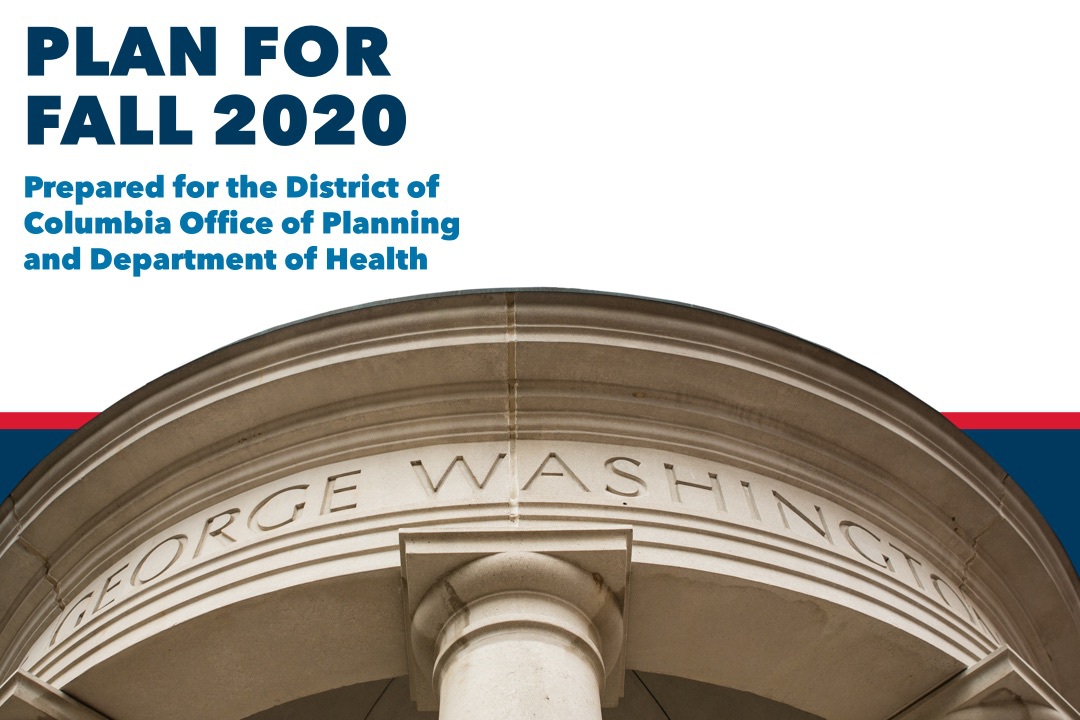After taking several actions this spring to address budget challenges driven by the COVID-19 pandemic, the university will now need to make personnel decisions, which will include staff layoffs, President Thomas LeBlanc told the Faculty Senate on Thursday.
“While the budget challenges we are facing create difficult decisions as we work to ensure the long-term financial sustainability of our university, we have committed to continuing to achieve GW’s core academic and research missions,” Dr. LeBlanc said. “We are currently in the process of determining our path forward, including making personnel decisions with a thoughtful and strategic approach. We will be sharing additional information with the university in the coming weeks about those decisions.”
In fiscal 2021, which begins July 1, the university is projecting a gap between expected revenue and expenses of roughly $100 million, if not higher. Dr. LeBlanc noted that roughly 70 percent of the university’s budget is dedicated to compensation and personnel, and GW must continually assess its organizational structure and functions of administrative units to ensure they are best supporting the university’s core missions with the resources available.
Executive Vice President and Chief Financial Officer Mark Diaz also provided context on how the university is approaching budget planning, noting that current mitigation categories include in part an examination of shared services; scaling, right-sizing, restructuring and recalibrating; and administrative compensation and non-compensation.
Currently, the university is in an assessment and evaluation phase, conducting reviews with leadership of each administrative unit to determine functions that are non-critical to the university’s core academic and research missions. Provost M. Brian Blake has been closely involved in discussions to represent the academic mission and perspective.
Principles for planning, Mr. Diaz said, include a sense of urgency, an inclusive and participatory process, a comprehensive review of all units, a strategic approach and distinguishing between temporary and long-term measures.
He also emphasized that planning is based on the information available now and noted the dynamic nature of the situation, given the unprecedented COVID-19 circumstances.
Faculty consultation
Faculty Senate Executive Committee Chair Arthur Wilson noted a letter the senate’s executive committee sent to the Board of Trustees with suggestions on operations changes, cost savings and ideas for generating new revenue.
The recommendations arose from three principles, according to the letter: protecting the university’s core missions, distinguishing between short- and long-term financial challenges and mitigation and avoiding “hasty” structural changes in the university’s research and educational activity by allowing adequate time for faculty consultation.
Dr. LeBlanc said in opening remarks that he and university leadership are “very much in agreement” on these principles and others previously established regarding shared governance.
“I want to reiterate that in all of our planning we have been consulting with and will continue to consult with the faculty in accordance with the shared governance principles that we established in consultation with the senate’s executive committee,” Dr. LeBlanc said, adding leadership is also following guidance issued by the Board of Trustees in May.
Other fall planning updates
Earlier this week, Dr. LeBlanc said, the university submitted its Fall 2020 Back to Campus Plan to the D.C. government, which outlined health and safety measures the university plans to undertake.
“I want to thank you, your colleagues, and the leadership of the university and the staff for everything you've been collectively doing to help move us forward toward our shared goal of bringing our students back to campus this fall,” Dr. LeBlanc said.
The senate heard more details on fall operational and academic planning from leadership:
Enrollment
Undergraduate admissions staff continues to closely monitor enrollment deposits, national trends and other factors in planning for the fall, Dr. Blake said. He added that, at this time, indicators of students’ likelihood to attend classes in the fall are similar to last year. Staff members are engaging with students who have not yet enrolled in fall courses. With respect to graduate programs, commitments for summer and fall are lower across all schools compared to last year, Dr. Blake said.
Academic Planning
Deputy Provost for Academic Affairs Terry Murphy reported that academic planning teams are “redrawing” classrooms to allow for social distancing between students as well as a six-foot “protection zone” for faculty teaching classes, and they are working now to allocate classroom space. “I know this is hard for faculty” to plan a course without knowing where they are teaching, Dr. Murphy said, “but we are working as fast as we can.” Work is also underway to: determine faculty who will be requesting accommodation; identify additional academic space that could be used for classrooms; and to add new technology to classrooms, such as cameras and microphones, for remote learning capabilities. Faculty are also encouraged to continue to take advantage of FLEX Teaching Camps and other instructional resources, which have been well-received, Dr. Murphy said.
Operations
After providing an overview of the Fall 2020 Back to Campus Plan, Associate Vice President for Safety and Security Scott Burnotes said more than 150 faculty, staff and students are now providing feedback on a more detailed playbook that will guide GW’s operations, taking into consideration the diverse needs of the university community and possible scenarios for the fall.
Resource Allocation Committee (RAC)
The RAC continues to evaluate requests for new essential hires on an “exceptional” basis during the current hiring suspension, Vice Provost for Faculty Affairs Chris Bracey said, adding the committee has “robust” discussions before making recommendations to the provost for academic hires and the chief financial officer for administrative hires. Leadership is working to accelerate the review of cases as much as possible, Mr. Bracey said.
Resolution
The senate also adopted one resolution, which calls on the administration to distinguish between short- and long-term financial adjustments and emphasized the importance of first making “reversible and temporary” adjustments and consulting faculty on “permanent structural changes” that “affect the academic mission or integrity of the university.”




